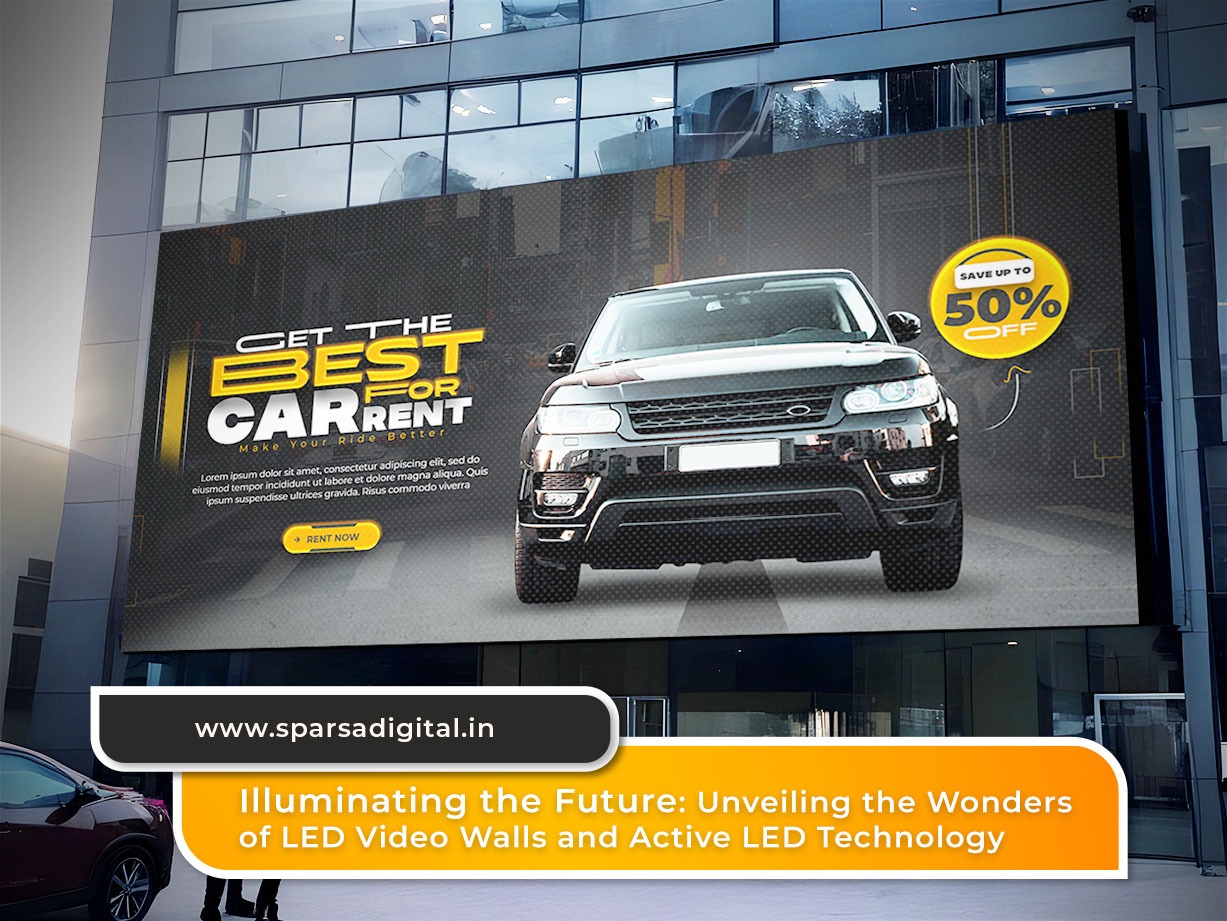In the ever-evolving landscape of visual communication, LED technology has emerged as a beacon of innovation. LED video walls, characterized by vibrant displays and dynamic visuals, have revolutionized the way we experience content in various settings. Additionally, the advent of active LED technology has further enhanced the capabilities of LED displays, offering unprecedented levels of interactivity and engagement. In this blog, we will explore the fascinating world of LED video walls and delve into the transformative potential of active LED technology, uncovering their applications, benefits, and the underlying technology that powers these captivating displays.
LED Video Walls: A Visual Symphony
Understanding LED Technology:
LED Basics: LED, or Light Emitting Diode, is a semiconductor device that emits light when an electric current passes through it. LEDs are energy-efficient, durable, and capable of producing brilliant colors, making them ideal for creating stunning visual displays.
LED vs. Other Display Technologies: LED technology has several advantages over traditional display technologies, such as LCD and plasma. LEDs offer better contrast ratios, wider viewing angles, and superior color accuracy. They are also more energy-efficient and environmentally friendly, consuming less power and generating less heat.
The Evolution of LED Video Walls:
Pixel Pitch and Resolution: Pixel pitch refers to the distance between individual pixels on an LED display. Smaller pixel pitch values result in higher resolution and sharper images. Advances in LED technology have allowed for finer pixel pitches, enabling the creation of high-resolution video walls suitable for close-viewing applications.
Types of LED Video Walls:
Indoor LED Video Walls: Designed for use in indoor environments, these displays offer vibrant colors and high brightness levels. They find applications in retail spaces, corporate offices, control rooms, and entertainment venues.
Outdoor LED Video Walls: Built to withstand the elements, outdoor LED displays are waterproof and resistant to environmental factors. They are commonly used for advertising, signage, and public displays in outdoor settings.
Key Features and Benefits:
Flexibility and Customization: LED displays offer flexibility in terms of size, shape, and configuration. Video walls can be customized to fit specific spaces, allowing for creative and engaging installations.
Energy Efficiency: Compared to traditional display technologies, LED video walls consume less power, contributing to energy efficiency and reduced operating costs.
Active LED Technology: Pioneering Interactivity
Introduction to Active LED Displays:
Interactive Display Basics: Active LED displays go beyond traditional static content by incorporating interactive features. These displays respond to touch, gestures, or other input methods, enabling users to actively engage with the content.
Multi Touch Capabilities: Active LED displays often support multi touch functionality, allowing multiple users to interact with the screen simultaneously. This capability is particularly valuable in collaborative environments, such as classrooms and meeting rooms.
Applications of Active LED Displays:
Corporate Collaboration: Active LED displays enhance collaboration in corporate environments by enabling interactive presentations, brainstorming sessions, and virtual meetings. These displays promote engagement and foster creativity among team members.
Retail and Wayfinding: Active LED displays in retail settings provide customers with interactive product information, virtual try-on experiences, and wayfinding solutions. These displays create immersive shopping experiences and help customers make informed decisions.
Technology Behind Active LED Displays:
Touch Sensing Technologies: Active LED displays utilize various touch sensing technologies, including infrared, capacitive, and optical sensing. Each technology has its unique advantages and is chosen based on factors such as accuracy, responsiveness, and durability.
Gesture Recognition: Some active LED displays incorporate gesture recognition technology, allowing users to interact with content through gestures such as swiping, pinching, and rotating. Gesture-based interactions add a layer of intuitiveness to the user experience.
Benefits of Active LED Technology:
Enhanced Engagement: The interactive nature of active LED displays captivates audiences and encourages active participation. Whether in a classroom, boardroom, or retail space, these displays create memorable and engaging experiences.
Collaboration and Productivity: Active LED displays promote collaboration by providing a shared platform for brainstorming, ideation, and problem-solving. In corporate settings, they contribute to increased productivity and innovation.
Customizable Applications: The versatility of active LED displays allows for a wide range of applications, from interactive presentations to virtual simulations. The ability to customize content and interactions makes these displays suitable for diverse industries.
Conclusion
As we navigate the digital landscape, LED technology continues to redefine our visual experiences. LED video walls, with their vibrant displays and customizable configurations, offer a canvas for creativity in various environments. The advent of active LED technology takes interactivity to new heights, transforming passive viewing into dynamic engagement. From classrooms and boardrooms to retail spaces and public venues, the synergy of LED video walls and active LED displays illuminates the future of visual communication. As these technologies continue to advance, we can anticipate even more immersive and interactive experiences that will shape the way we connect with information and each other.

